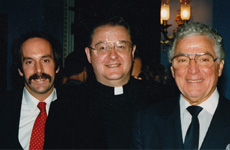The most definitive study of Northern Ireland’s most powerful political party ever undertaken
Posted By: June 06, 2014
Inside the DUP: Domination by Free Presbyterian Church and Orange Order laid bare
Exclusive: The most definitive study of Northern Ireland’s most powerful political party ever undertaken
DUP leader Peter Robinson pictured at Parliament Buildings, Stormont
BY LIAM CLARKE . Belfast Telegraph. Thursday, JUNE 5, 2014
The influence of the Orange Order and the Free Presbyterian Church within Northern Ireland’s biggest political party can today be laid bare.
The Belfast Telegraph begins a series revealing the details of the most extensive study ever carried out into the DUP.
The Democratic Unionist Party: From Protest To Power will be published by Oxford University Press later this month. Exclusive extracts show that Free Presbyterianism remains the largest faith among both DUP members and elected representatives. The Orange Order is even more dominant.
Orange influence grows, church’s grip slackens
Professor Jonathan Tonge surveyed 75% of the party’s members in interviews carried out with the active support of the leadership. His findings reveal that Free Presbyterianism, the tiny denomination founded by Ian Paisley, still remains the largest faith among both DUP members and elected representatives.
The Orange Order is even more dominant, counting the majority of DUP elected representatives and more than a third of party members among its ranks.
According to the research, just under a third of DUP members (30.5%) are Free Presbyterians and slightly more (34.6%) are members of the Orange institution.
To put these figures in context, the 2011 census recorded that there were 10,068 Free Presbyterians in Northern Ireland – just 0.6% of our total population.
Like most political parties, the DUP does not disclose its membership, but it is believed to number around 1,100 people.
Overall, Free Presbyterians are more than 50 times more common in the DUP than they are in the population. Orangemen are 21 times more common in the party.
The prevalence of both bodies increases as you move up the ranks. Almost 40% of the 175 DUP councillors elected in 2011 were Free Presbyterian and more than half (54.2%) were members of the Orange Order. These proportions may have fallen a little in the council elections held last month.
Among the DUP’s 38 MLAs over a third are Free Presbyterians and exactly half are Orangemen. The proportion increases further among the party’s eight MPs.
Prof Tonge points out that the influence of the Free Presbyterian Church has declined over time, whereas the Orange Order membership appears to have increased.
This is partly due to an influx of new members between the signing of the Belfast, or Good Friday, Agreement in 1998, which it opposed, and 2006 when the DUP signed the St Andrews Agreement on power-sharing with Sinn Fein.
Many of these new recruits were members of the Ulster Unionist Party, which had links with the Orange Order but not with the Free Presbyterian Church.
Dr Tonge found that “prior to the signing of the 1998 Belfast Agreement, 56% of DUP members were Free Presbyterians. During the period of DUP opposition to the 1998 deal, Free Presbyterian membership still ran at one in five of new members (well down on the early days) but decline to a mere 13% after the 2006 St Andrews Agreement”.
Other figures show, that particularly in the early days of the DUP, several converted to the Free Presbyterian Church when they joined the party. Some 29.8% of DUP members were born into the Church of Ireland but only 17.7% still belong to that denomination.
An unnamed former DUP mayor of Belfast told researchers that he was asked by a fellow DUP councillor what church he attended. When he replied: “Stormont Presbyterian”, he was told: “You haven’t found freedom yet.”
Assessing the most active members of the party, Dr Tonge found: “It is the Orange contingent not, contrary to popular myth, the Free Presbyterians, who really count as the most active of all.”
One gauge of support for the Orange Order was the view of DUP members on parading rights. A clear majority, 58%, think the Order should be able to march wherever it likes, but quite a high number, 31.6%, believe it should only be allowed through nationalist areas “if there is prior agreement with nationalist residents”.
The Democratic Unionist Party: From Protest To Power by Jonathan Tonge, Maire Braniff, Thomas Hennessey, James W. McAuley, and Sophie Whiting; Oxford University Press, £55
What they said… voice from inside the party
DUP leader Peter Robinson
“I don’t think that the church should have any influence on it (DUP policy). People’s own faith will guide them in terms of their outlook on life and therefore, from a structural institutional point of view, it (the score) should be a zero, but from a personal point of view, it should be 10. Individuals are what they are because of the beliefs that they hold and nothing will be held more sincerely than whatever their religious beliefs are.”
MLA Paul Girvan
“Some people say religion and politics should never really mix. I am a total disbeliever in that aspect because I believe politics came about through religion. If you use the Ten Commandments, you can formulate almost every law that you need.”
Ballymena non-Free Presbyterian councillor
“On occasions I would be made to feel like an outsider . . . I would like to see a bit more openness in the members, who are there with strong beliefs, to the likes of me. I am not a disease coming in the midst of them.”
A UUP defector, now a North Belfast councillor
“I never got the sense being in the DUP that it is a political wing of the Free Ps . . . there was a disconnect between the two even before St Andrews and those who were Free P and DUP were starting to draw the distinction between the t










